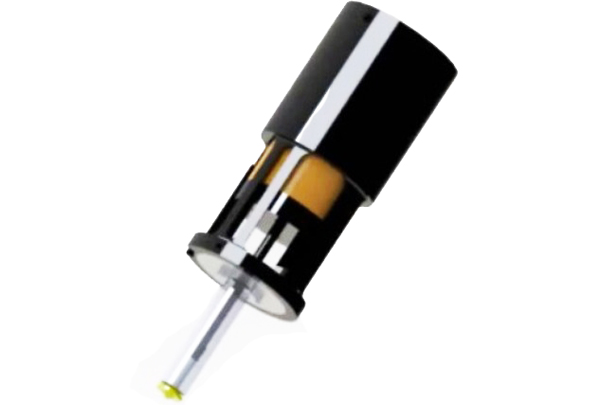Researchers from the Massachusetts Institute of Technology (MIT) have invented a device that injects the medicine through the skin without using a needle.
Scientists designed the injection based on mechanism called a Lorentz-force actuator – a small, powerful magnet surrounded by a coil of wire that is attached to a piston inside a drug ampoule. The device works on current, and when current is applied, it interacts with the magnetic field to produce a force that pushes the piston forward, ejecting the drug at very high pressure and velocity through the ampoule’s nozzle.
Scientists claim that the speed of the coil and the velocity imparted to the drug can be controlled by the amount of pressure applied. The MIT team generated pressure profiles that modulate the current.
The resulting wave forms generally consist of two distinct phases: an initial high-pressure phase in which the device ejects drug at a high-enough velocity to “breach” the skin and reach the desired depth, then a lower-pressure phase where drug is delivered in a slower stream that can easily be absorbed by the surrounding tissue, according to the MIT report.
“If you are afraid of needles and have to frequently self-inject, compliance can be an issue,” said Catherine Hogan, a research scientist at the MIT’s Department of Mechanical Engineering , in a statement. “We think this kind of technology gets around some of the phobias that people may have about needles.”
The study also found that the device can reduce needle-stick injuries. The Centers for Disease Control and Prevention estimates that hospital-based health care workers accidentally prick themselves with needles 385,000 times each year.
Earlier, scientists had developed several alternatives to the needle. They included nicotine patches and jet injectors which were quite effective but were not so good for treating all diseases.
Nicotine patches slowly release drugs through the skin. But these patches can only release drug molecules small enough to pass through the skin’s pores, limiting the type of medicine that can be delivered.
“If I’m breaching a baby’s skin to deliver vaccine, I won’t need as much pressure as I would need to breach my skin,” Hogan says. “We can tailor the pressure profile to be able to do that, and that’s the beauty of this device.”
“This design provides excellent control over jet parameters, including speed and doses and this will enhance the applicability of needleless drug devices,” he added.
In the science fiction series Star Trek, the spaceship‘s medical officer Leonard ‘Bones’ McCoy would treat injuries with a needleless device. In tests, the group found that various skin types may require different pressure to deliver adequate volumes of drugs to the desired depth.
This is reported in the science journal Medical Engineering and Physics.
Credits: MIT
Also read:




